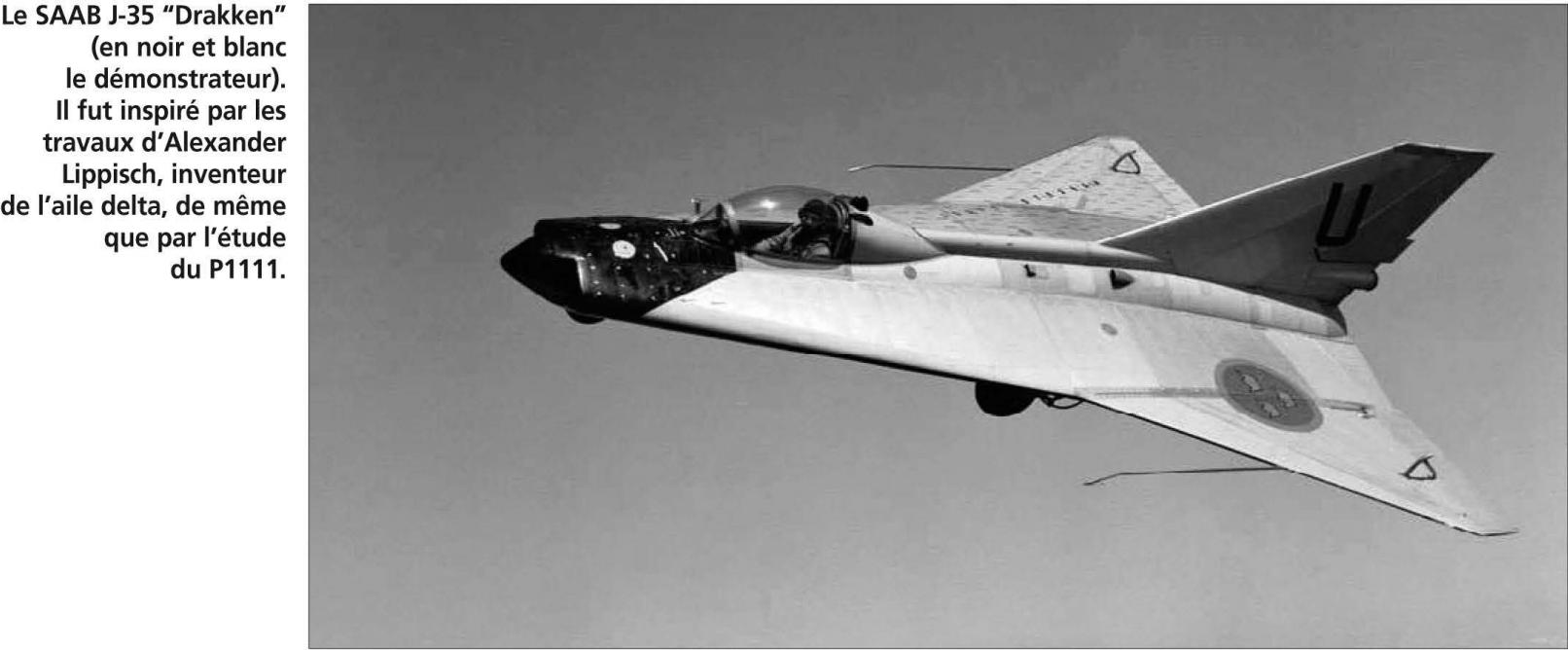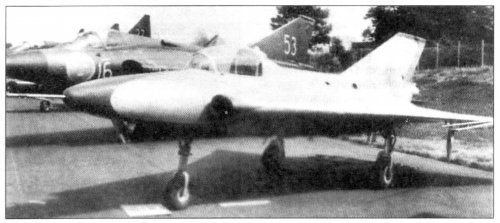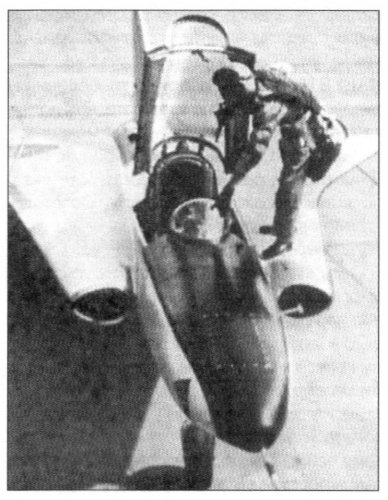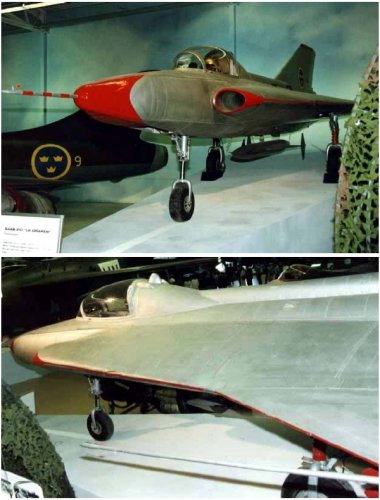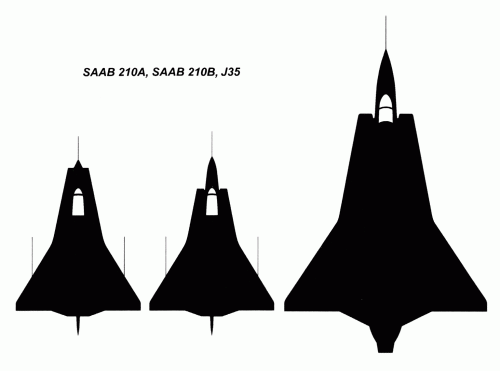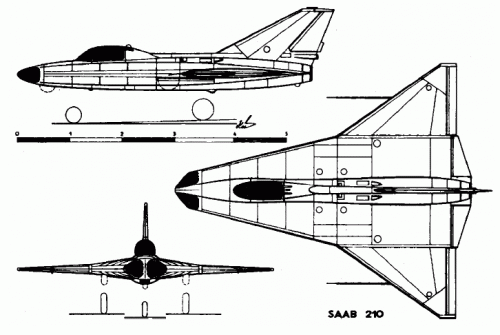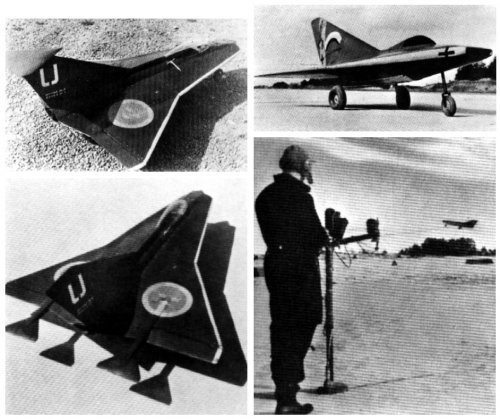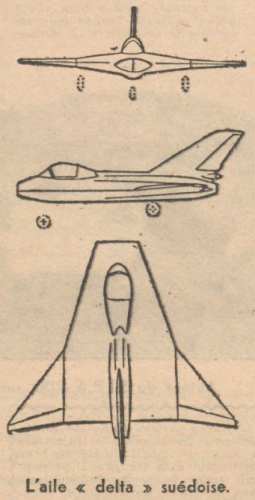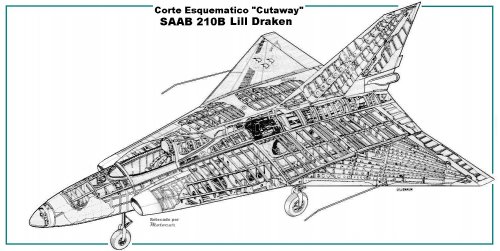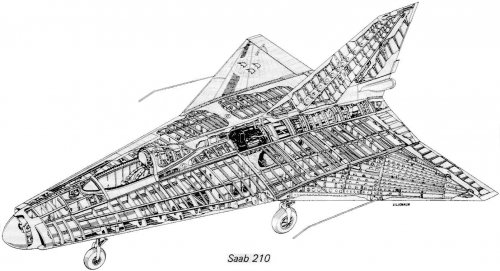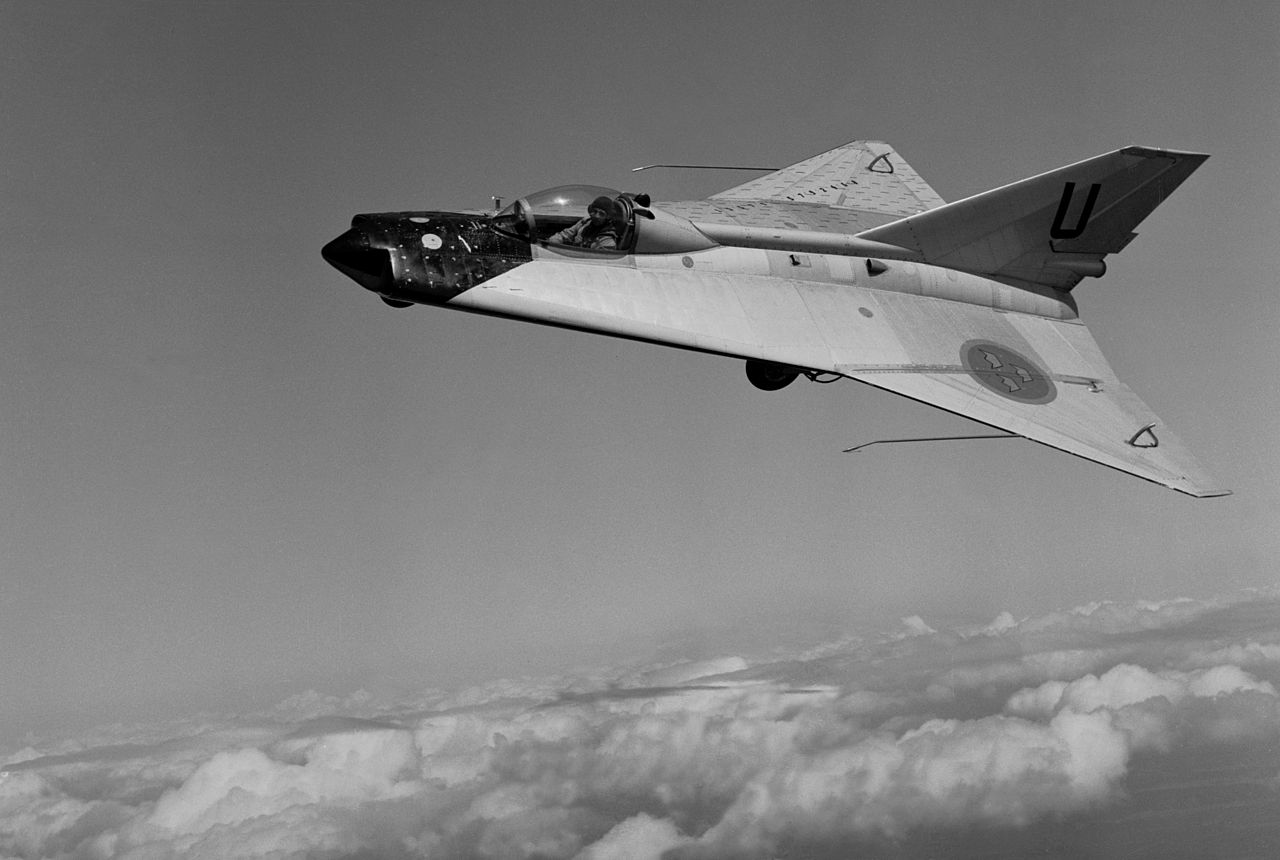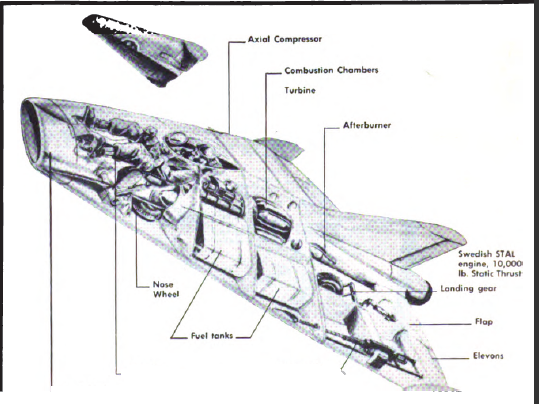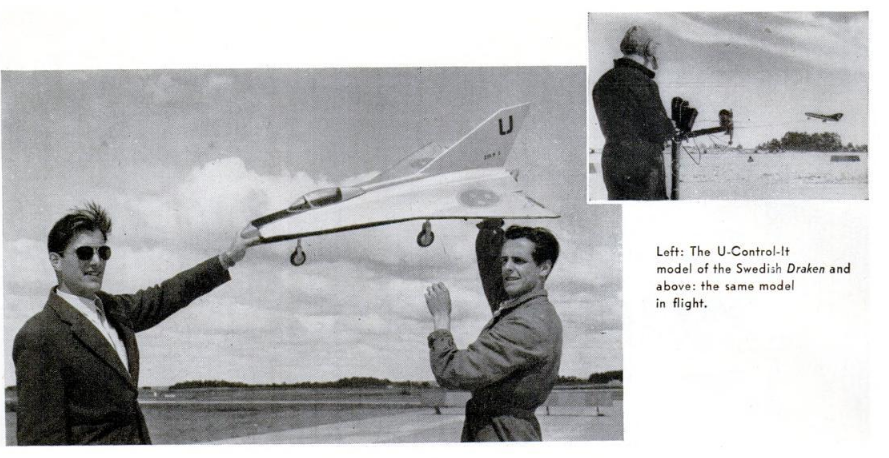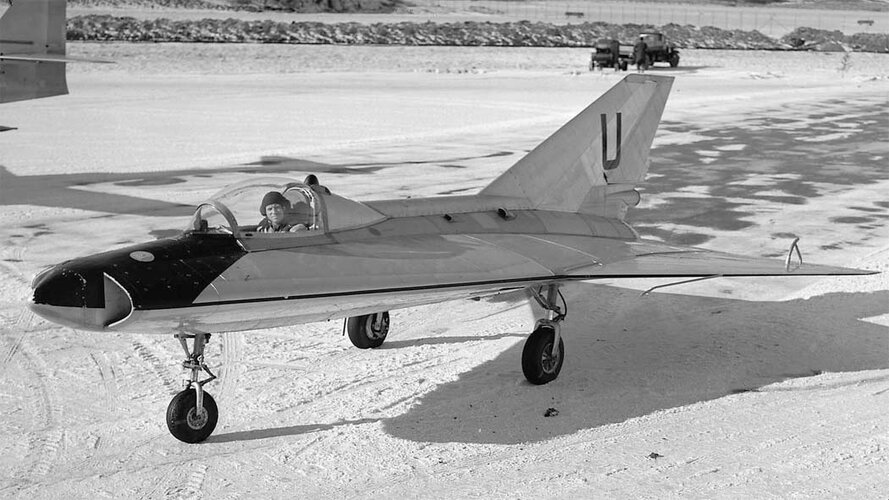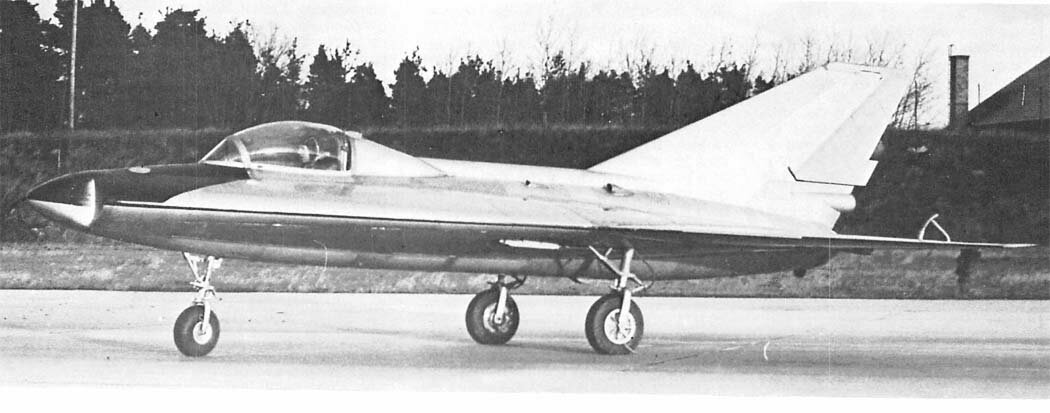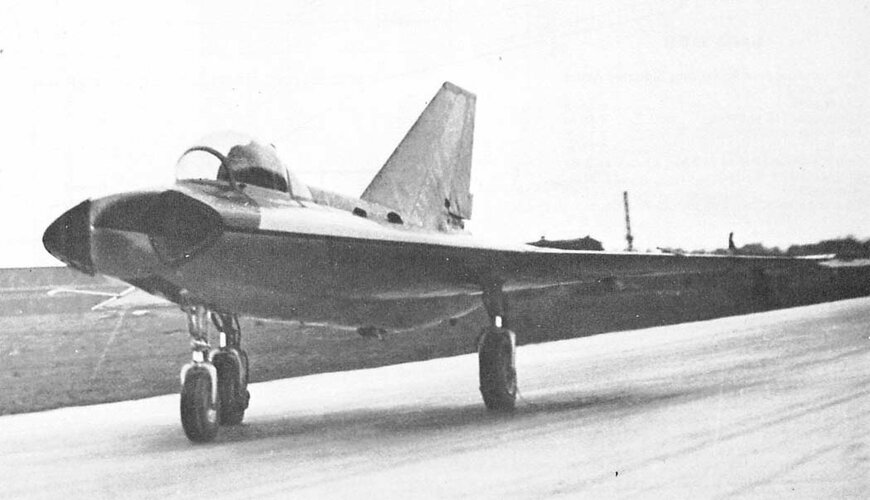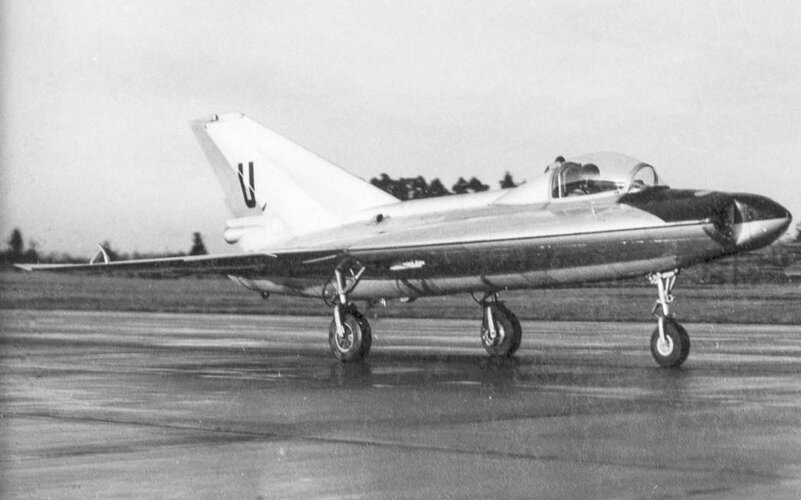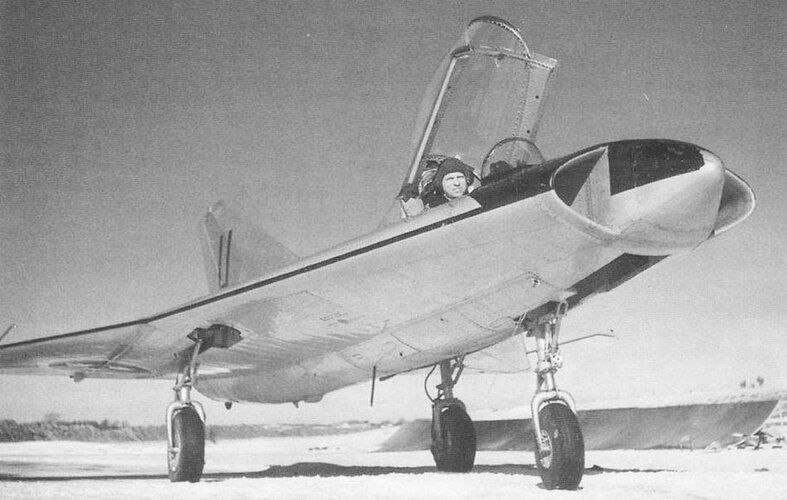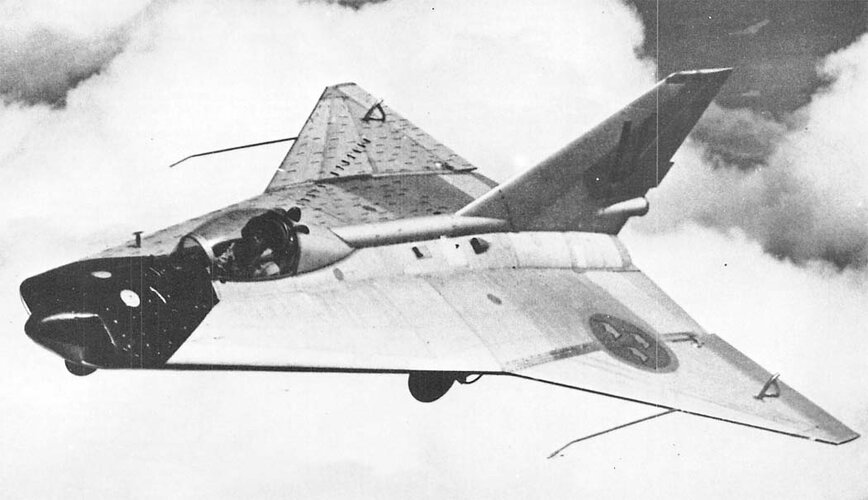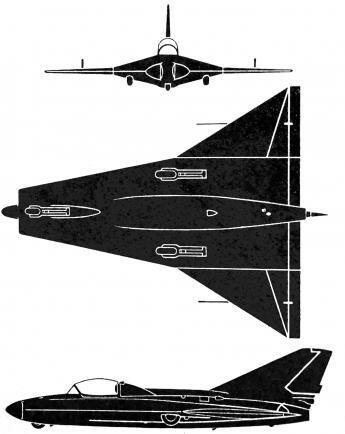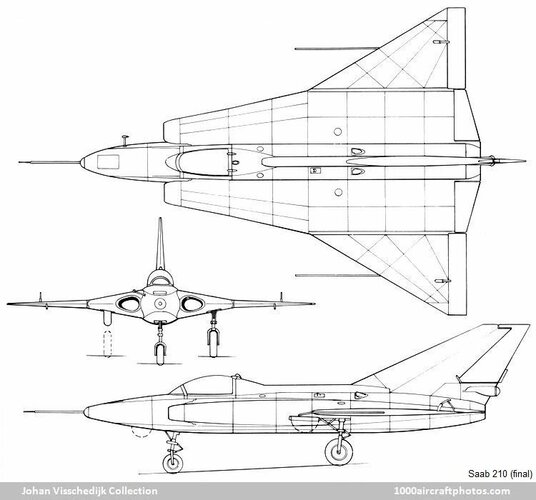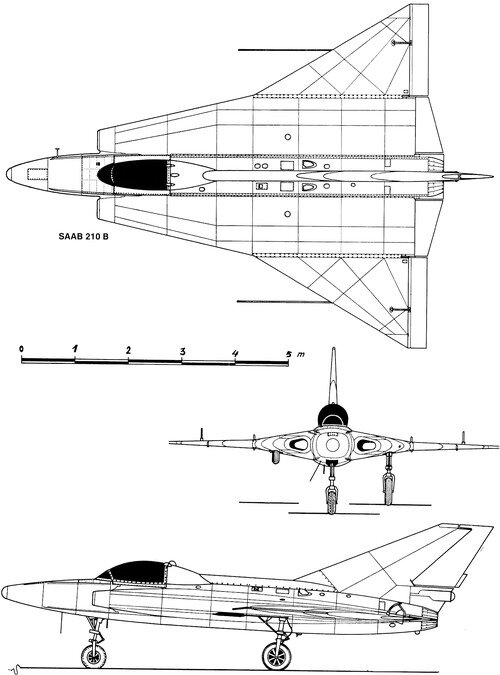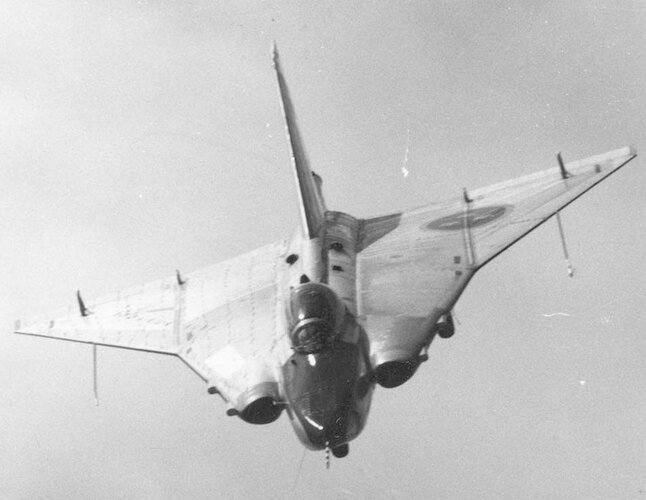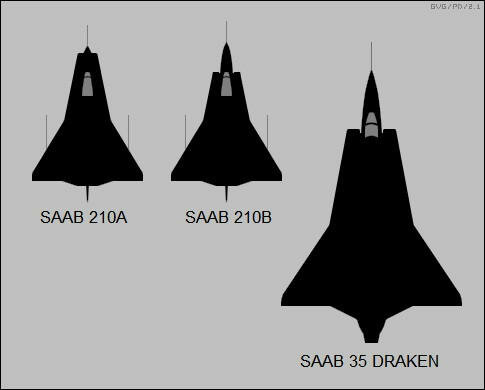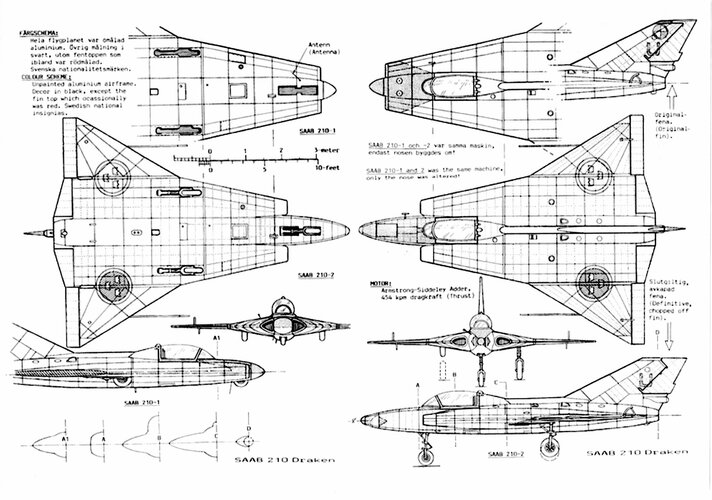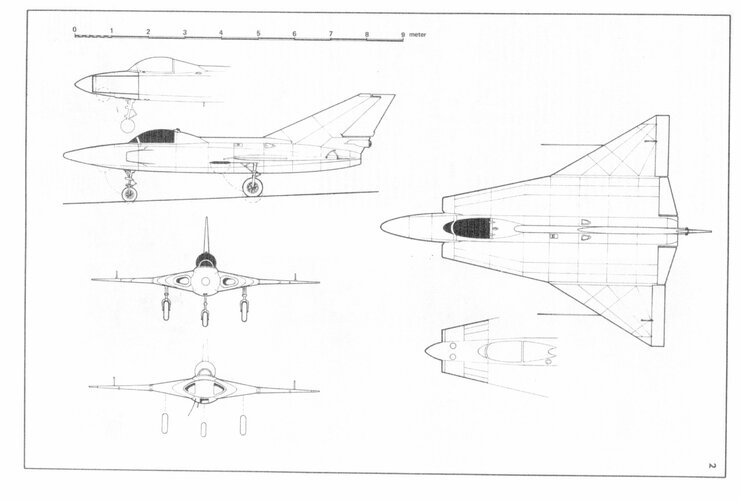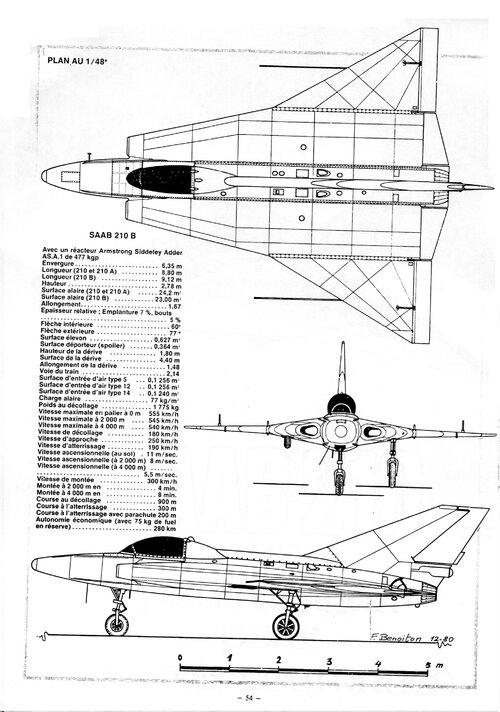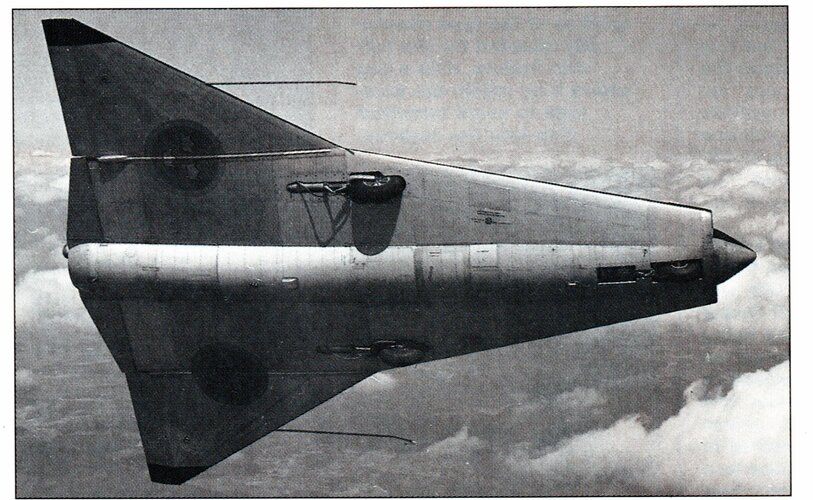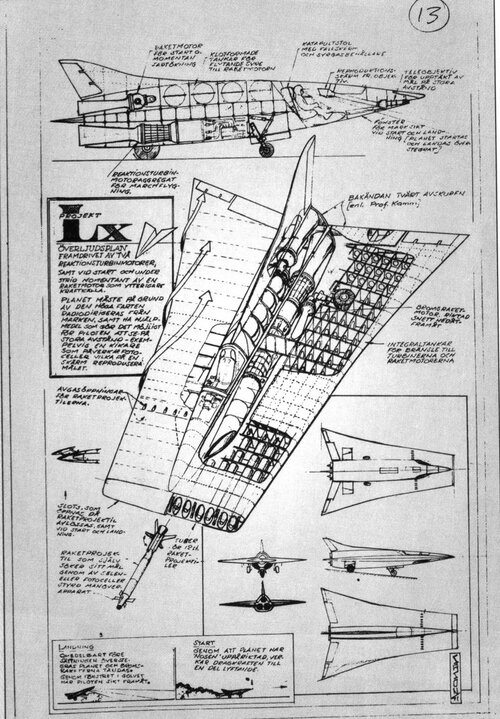- Joined
- 13 August 2007
- Messages
- 7,125
- Reaction score
- 6,439
some short Translation from me
so the SAAB 210 DRAKEN i know look like that

nickname by pilot "Lildraken" (so wiki)
cant be that the AR french magazine show design study of DRAKEN and not real thing ?
or give a french Artis the order to draw one ?
The Saab 210 "DRAKEN"
..put a new "all Time" (all Weather?) interceptor in a new format..
..the Saab 210 "DRAKEN" has double Delta wing..
..this curious machine has maiden flight December 1951
and made 700 fight without incident...
... the center of gravity can be modify during flight by pumping liquid in reservoirs
in nose and rear end of plane...
... the pilot has a ejection seat...
the (jet) engine is a Armstrong Siddeley Adder with 475 kg (trust?)
giving the DRAKEN a top speed of 600 km/h (372,8 miles/h)...
...it was design and build in 18 month (by SAAB) with help of
Sweden Ministry of Air, Institute of aerodynamic researches, Royal Institute of Technology
test fight made by B.R Olow
Note for several month the Aircraft nose were major modified
after the testflight
so the SAAB 210 DRAKEN i know look like that
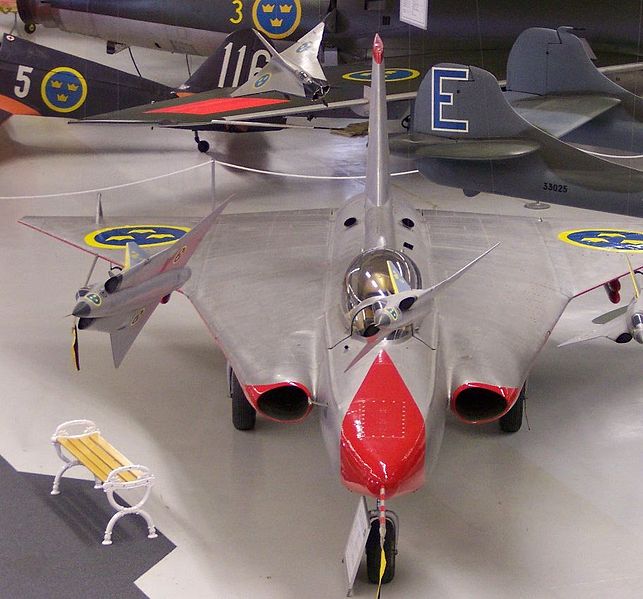
nickname by pilot "Lildraken" (so wiki)
cant be that the AR french magazine show design study of DRAKEN and not real thing ?
or give a french Artis the order to draw one ?

